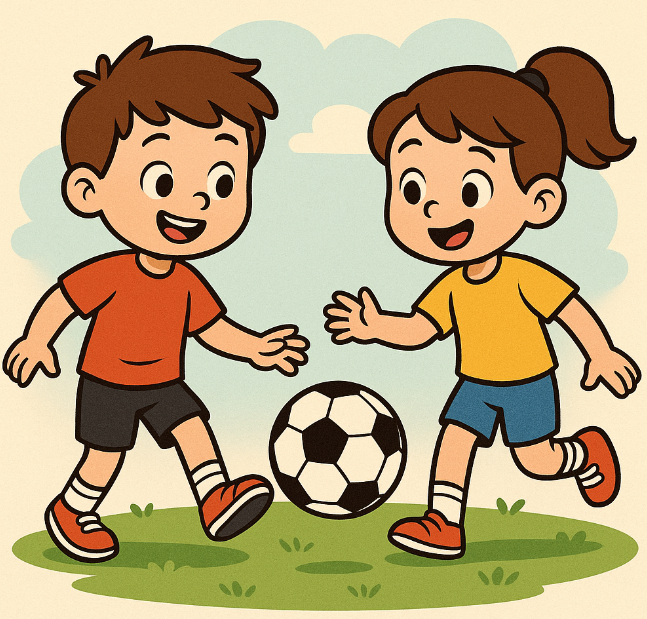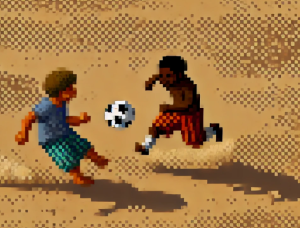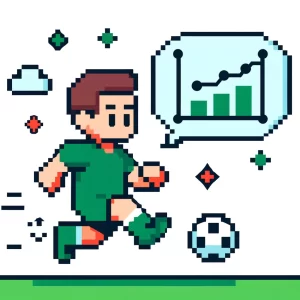
Play Your Way to Perfect Passing
Picture this: you’re coaching a group of eager 9-year-olds. They love the game—but every time they try to pass, the ball skids off target or gets intercepted. You run the standard cone drills, but they start to lose focus. One kid starts dribbling off to the corner. Another is tying his shoes. Sound familiar?
A recent study by Imam Mahfud and Eko Bagus Fahrizqi from Universitas Teknokrat Indonesia found a simple but powerful solution: turn passing practice into play. By blending structured drills with playful competition and variation, the researchers developed a play-based passing training model that significantly improved skills, engagement, and performance among elementary school beginners.
This isn’t just about fun—it’s about unlocking how kids learn best.
What the Research Found
The researchers started with a common problem: young players struggle to master passing. In real games, poor passing leads to lost possession, broken plays, and frustration. But the issue wasn’t talent—it was training. Traditional drills weren’t aligned with how kids actually develop coordination and focus.
To fix this, the team designed and tested a new passing model based on the play method. Here’s how it worked:
- Needs Analysis: The team observed existing youth training sessions and interviewed coaches.
- Model Development: They created a training model with 25 progressive passing games, starting from easy to challenging.
- Expert Validation: Two soccer lecturers and one professional coach reviewed the model. Their verdict? A solid 82.6% effectiveness score—rated valid and suitable for use.
- Field Testing: After implementation, children’s passing accuracy, technique, and enthusiasm all improved dramatically.
The key insight: kids learn faster and stay more motivated when training feels like play.
Why Play Works (The Science Behind It)
According to developmental psychologist Jean Piaget, children learn best through concrete, hands-on experiences—and play provides exactly that. In soccer terms, that means drills shouldn’t feel like homework—they should feel like a game within the game.
Here’s what happens when you shift from rigid drills to play-based models:
- Motor learning accelerates. Repetition happens naturally in games like “pass-and-chase” or “keep away,” which mimic real match conditions.
- Focus increases. Instead of counting reps, players focus on staying in the game—boosting situational awareness.
- Confidence grows. When players see improvement in fun contexts, they’re more likely to try new skills.
- Teamwork develops organically. Kids learn to communicate, move into space, and anticipate passes without formal lectures.
In essence, play transforms practice from something players “have to do” into something they want to do—and that’s where true skill development happens.
5 Takeaways for Coaches
Whether you’re running a youth academy or coaching a U10 team, you can apply this research starting today.
1. Start Simple, Build Up.
Begin with easy, short-distance passing games. Add movement or pressure only after players show consistency. Think “target passing,” not “perfect passing.”
2. Mix Fun with Focus.
Alternate between serious technical drills and game-like challenges—like “pass to score” or “four corners.” Kids stay sharp when variety keeps boredom at bay.
3. Reward Creativity.
Allow players to try different passing styles—inside foot, outside curve, through balls. Praise the idea, not just the result.
4. Use Groups of 3–5 Players.
Smaller groups mean more touches and fewer idle moments. This matches the study’s emphasis on group play for social learning5494-Article Text-13179-1-10-20….
5. Make Progress Visible.
Track weekly improvements in passing accuracy or successful combinations. Let kids “see” their growth—it’s the best motivator there is.
Connecting to the Bigger Picture
Across global soccer, there’s growing recognition that fun fuels learning—especially in foundational years. From Spain’s small-sided youth programs to the U.S. Soccer Grassroots Curriculum, the best academies blend joy with purpose.
Mahfud and Fahrizqi’s work adds evidence to what great coaches already sense: play is not a distraction from skill—it’s the pathway to it. And when young players associate learning with enjoyment, you’re not just building better passers. You’re building lifelong players.
Your Turn to Kick It Off
How could you bring more play into your training sessions?
Which drills do your players love most—and why?
What’s one new game you’ll introduce this week to make passing practice irresistible?
Share your ideas below or tag us with #PlayToPass on social media. Let’s make training something every player can’t wait to show up for.



